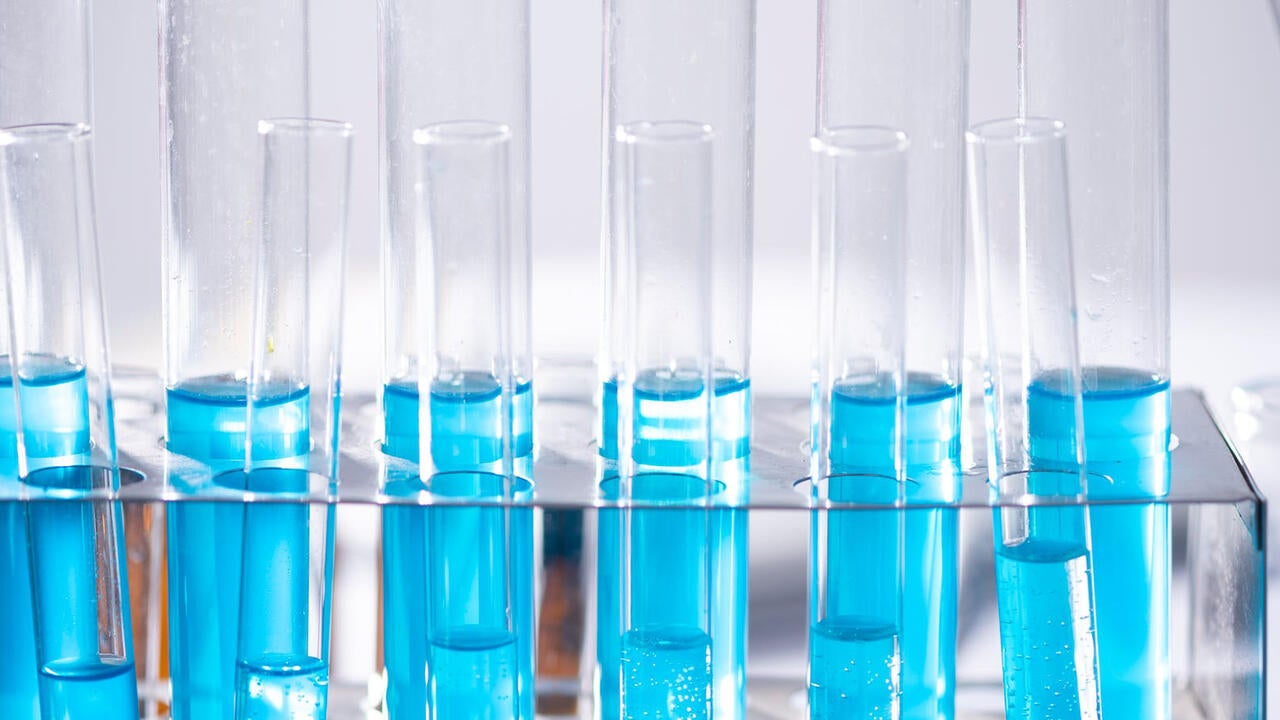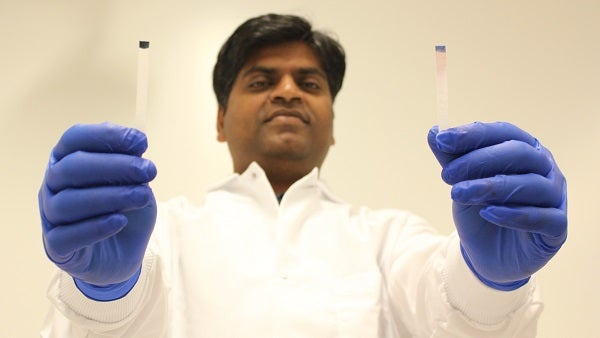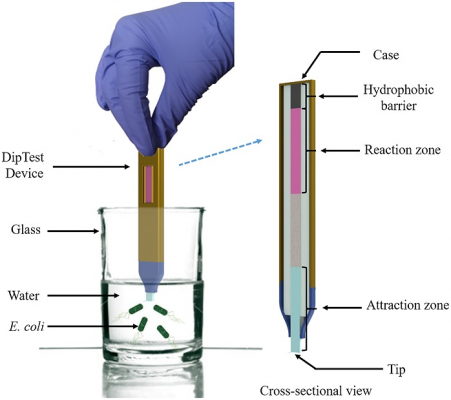
Paper strips make water testing fast, cheap and easy
A fast, simple and inexpensive test developed by researchers at Waterloo Engineering could help billions of people in the developing world avoid getting sick from contaminated water

A fast, simple and inexpensive test developed by researchers at Waterloo Engineering could help billions of people in the developing world avoid getting sick from contaminated water
By Brian Caldwell Faculty of EngineeringA fast, simple and inexpensive test developed by researchers at Waterloo Engineering could help billions of people in the developing world avoid getting sick from contaminated water.

Naga Siva Kumar Gunda displays an unused testing strip, left, and one that has produced a positive result for E. coli bacteria in water by changing colour, right.
The system uses paper strips to test water for the presence of potentially deadly E. coli bacteria in less than three hours and at a cost of about 50 cents, compared to $70 and up to three days for laboratory tests.
That means routine, on-site testing of drinking water in developing areas of the world could become both easy and affordable, preventing illness by triggering actions such as boiling advisories.
“As a community, you need a rapid test so at least you know that the water you are drinking is safe,” says Sushanta Mitra, executive director of the Waterloo Institute for Nanotechnology. “This is a breakthrough with the potential to have a huge impact on public health.”
Researchers targeted E. coli – the culprit in a deadly disease outbreak in Walkerton, Ontario in 2000 – because it is an indicator organism of water contamination in general.

This graphic shows how simple strips developed by Waterloo Engineering researchers detect E. coli bacteria in water.
The bottom of the paper strip developed by Mitra and his colleagues is laced with sugar, which begins to dissolve when placed in water. E. coli bacteria are attracted by the resulting sugar trail in the water and get trapped in the porous paper when they make contact with it.
As water is drawn up the paper, it carries the trapped bacteria into the “reaction zone,” an area treated with a chemical mixture. The bacteria then react with the chemicals to turn the strip pinkish red to indicate a positive result.
High levels of E. coli contamination can produce a result in just 30 minutes, while low levels require up to three hours.
Work to refine the strips and reduce test times is now being done by Glacierclean Technologies Inc., a startup company founded by Mitra, also a mechanical and mechatronics engineering professor at Waterloo, and Naga Siva Kumar Gunda, a post-doctoral fellow at Waterloo, to commercialize their research.
The company already sells more complicated, more elaborate mobile kits to detect E. coli in water for about $5 a test.
Mitra’s research appears in the journal PLOS ONE.

Engineering master's student Nayeema Nonta (left), one of the three paper authors, and her supervisor, Dr. Sirisha Rambhatla, in a large server room with the computer power needed to develop their new LLM training technique. (University of Waterloo)
Read more
Waterloo researchers develop highly efficient AI training system that paves the way for cheaper, greener “intelligent partners”

Read more
Engineering researchers team up to tackle the plastics pollution problem with microbial innovation and engineering design

Read more
15 University of Waterloo researchers have been named to the annual Highly Cited Researchers™ list for significant contributions to their specific fields of research
Read
Engineering stories
Visit
Waterloo Engineering home
Contact
Waterloo Engineering
The University of Waterloo acknowledges that much of our work takes place on the traditional territory of the Neutral, Anishinaabeg, and Haudenosaunee peoples. Our main campus is situated on the Haldimand Tract, the land granted to the Six Nations that includes six miles on each side of the Grand River. Our active work toward reconciliation takes place across our campuses through research, learning, teaching, and community building, and is co-ordinated within the Office of Indigenous Relations.